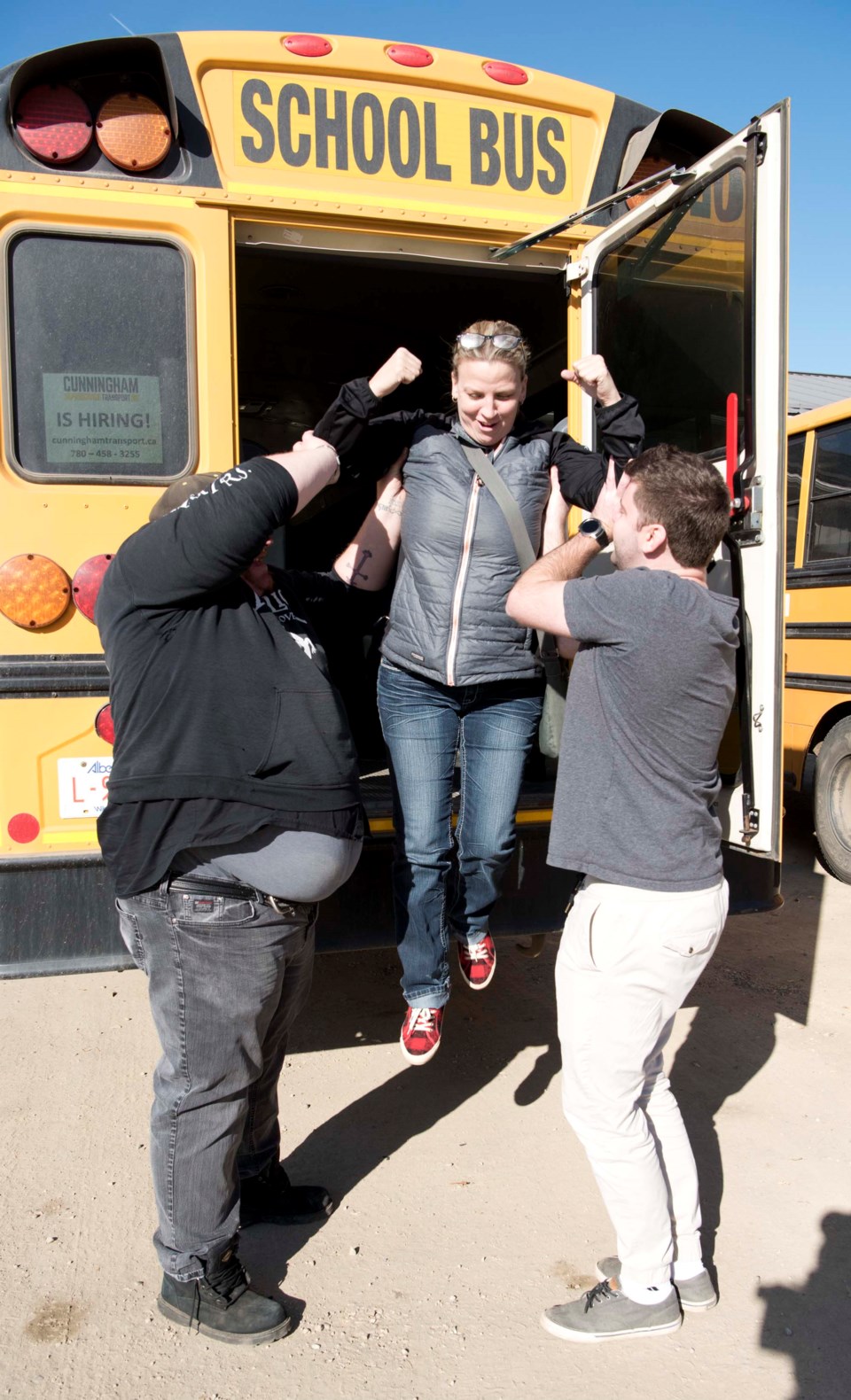Thousands of St. Albert students will head for the emergency exits next week as they practise how to get off the bus during a crisis.
Oct. 20 to 26 is School Bus Safety Week in Alberta. St. Albert Public bus drivers will hold bus evacuation drills throughout next week to train students in what to do during an emergency. Some 3,000 St. Albert Public students are expected to take part.
This month’s drill will be a front-door evacuation, said St. Albert Public transportation services manager Kris Salerno. Each drill will be timed, with drivers aiming to clear their buses as quickly and safely as possible. Most will happen after buses arrive at their schools in the morning.
Trainer Justin Nielsen teaches new drivers at Cunningham Transport how to do bus evacuations and walked the Gazette through the basics. Cunningham does two drills a year for its buses, one front door and one rear.
If there’s not an immediate threat – say you’re just waiting for a replacement tire – it’s usually safest to keep the kids on the bus, Nielsen said. Drivers typically clear the bus if it’s on fire, sinking in water or if it’s stuck on a corner where a car might whip around and hit it.
The first and most important step in any evacuation is to stay calm and listen to the driver, Nielsen said.
“When you start panicking, then things go south.”
The driver will direct passengers to the front, rear, side or roof exits based on the nature of the threat, he continued. You typically crawl out the roof if the bus is on its side, and go out the front or back based on which end of the bus isn’t on fire/smashed/hanging off a cliff/etc. The side exits only come into play if both the front and rear doors are unsafe.
Starting from the end of the bus closest to the danger, the driver goes row by row, telling passengers to get to the exit. The first two students (typically bigger, older ones) open the exit, triggering an alarm, get out and stay by the exit to lift others down to the ground. The third one out heads to a tree or marker 30 feet from the bus and serves as a rally point for the evacuees.
If there’s anyone injured on the bus, it’s the driver’s job to either carry or (using a blanket) drag them out, Nielsen said.
“We’ll do anything we can to get all those kids off there safely.”
The last thing the driver does before leaving the bus is to grab the first aid kit and fire extinguisher at the front, Nielsen said – they’ll grab these items first thing if it’s the front of the bus that’s in danger. If they’ve got a lot of time, the driver can also grab and deploy safety cones around the bus. Drivers used to hang the radio microphone out the window for communications, but nowadays everyone uses their cellphones.
Nielsen said most drivers can clear 48 high-schoolers off a bus in under 60 seconds. He managed to get 63 elementary students off his bus in about 36 seconds last year.
Salerno and Nielsen said they could not recall an actual bus evacuation happening in St. Albert in recent memory.
Questions on the drills should go to Salerno at 780-460-3712.




